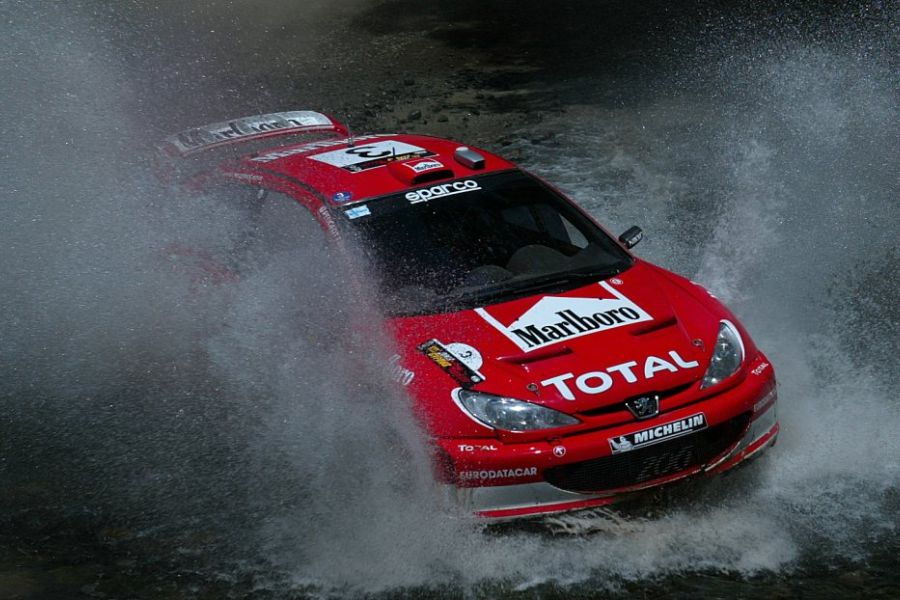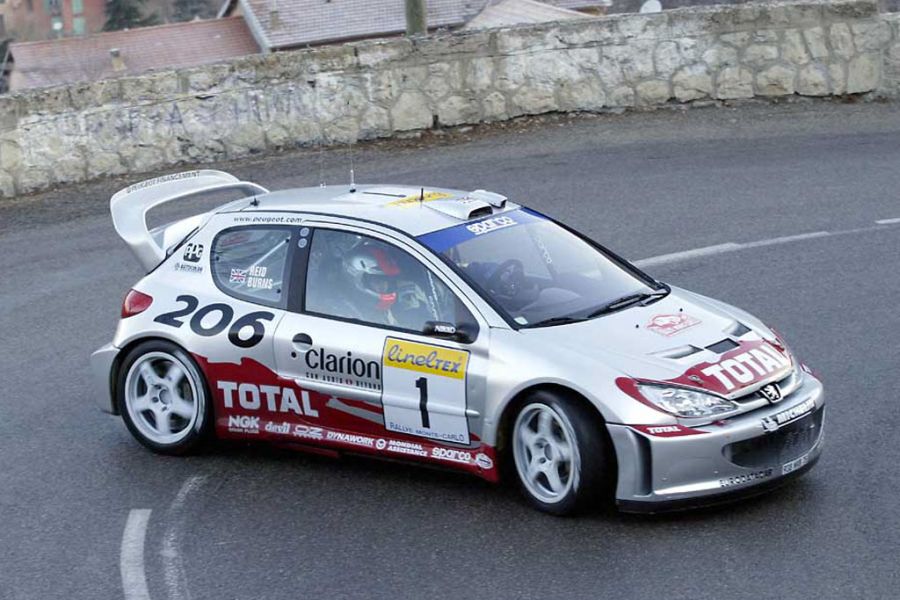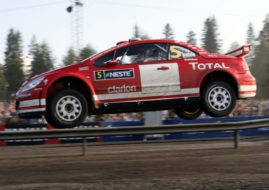Peugeot 206 WRC - Last Lion on the Top of the World
Through the history of the world rallying, Peugeot had a couple of championship-winning cars. The first was the brutal Group B-spec Peugeot 205 Turbo 16 during the 1980s, another one was the Peugeot 206 WRC in the early 2000s. That was the model that captured three consecutive world manufacturers’ titles between 2000 and 2002 and added two more drivers’ titles for Marcus Gronholm in 2000 and 2002. The last season for the 206 WRC was in 2003, after that it was replaced with 307 WRC.

Gilles Panizzi competed with 206 WRC from 1999 to 2003
Peugeot 206 WRC came 13 years after 205 T16
The Peugeot 206 WRC was one of the first-generation of World Rally Cars. The concept was introduced in 1997 and Ford Escort WRC, Subaru Impreza WRC and Toyota Corolla WRC were the first among the new generation of cars. Peugeot unveiled its model in 1999. It marked the return of the French manufacturer to the World Rally Championship for the first time after the Group B was outlawed in 1986.
In the meantime, Peugeot developed 306 Maxi, which was the front-wheel-drive kit car that was successful in the national and European rally events. It participated also in the selected rounds of the World Championship, but for the proper competition Peugeot needed WRC-spec car. The first prototypes of the Peugeot 206 WRC, based on the production model 206, appeared in 1998.
300 bhp from 2.0-litre turbo engine
Only the name (road legal 206) stayed the same, because there were no common parts between the production and rally car, apart from the light housings and door handles. 206 WRC featured 2.0L 4-cylinder turbo engine with a power output of about 300bhp. Tha car was short (4005 mm) and compact, with a minimum weight of 1230 kgs.
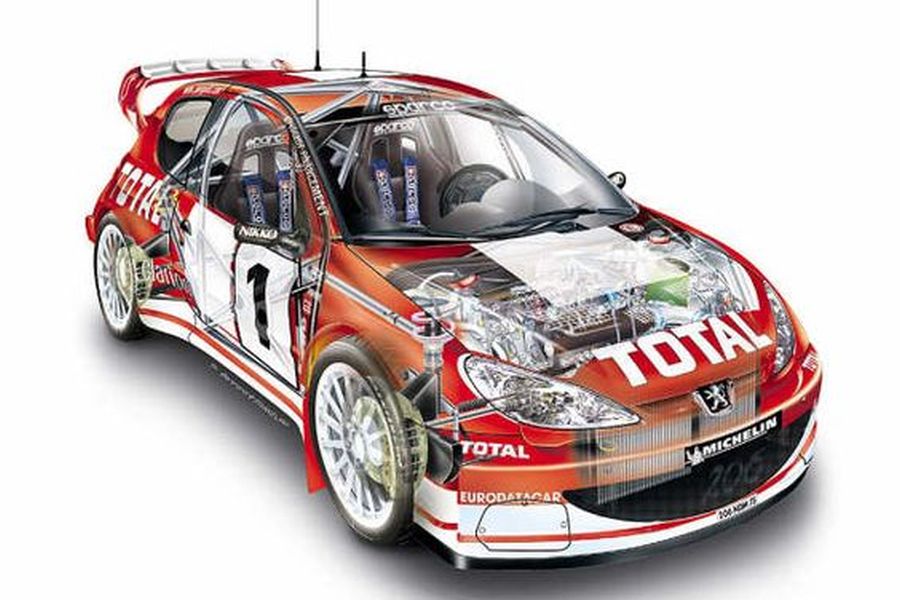
Peugeot 206 WRC cutaway
206 WRC featured electronically controlled differentials
Every world rally car of that time was similar to one another, with front-engines and four-wheel-drive systems, so the main difference was hidden in the onboard electronics systems, which included engine management, differential locking management, suspension management… The first version of the 206 WRC was using the central hydro-electronically controlled differential while the front and the rear differential were mechanical. During 1999 and 2000 modifications were made, so the later versions had electronically controlled differentials all around.
Unusual gearbox-engine layout
The gearbox, manufactured by X-Trac, was longitudinally mounted at the rear of the engine, which was transversally mounted. That unusual architecture of longitudinal gearbox on the transversal engine has many advantages but could also lead to mechanical failures.The numerous transmission problems in the first season were proving that. In 2000, Peugeot started to use steering wheel-mounted levers of the sequential gearbox. Peugeot was also the first manufacturer who switched to 5-speed gearboxes instead of 6-speed.
It’s interesting that Peugeot produces its own shock absorbers for the car and works in close collaboration with Michelin in the field of tire development. This approach resulted in enhanced suspension and traction performance.

Peugeot 206 WRC debuted in 1999 WRC season
Only one podium in a debut season
The Peugeot 206 WRC had its competitive WRC debut at 1999 Tour de Corse, the sixth round of the world championship, with two French drivers in the Esso-sponsored #14 and #15 cars – Francois Delecour and Gilles Panizzi. Both retired due to mechanical problems. Marcus Gronholm joined the squad in the eighth round in Greece but he also retired during his debut with Peugeot.
The first good result followed at 1999 Rally Finland, where Gronholm finished fourth. The season’s best result was Panizzi’s second place at Rallye Sanremo in October, behind the world champion Tommi Makinen.

2000 world rally champions
Maiden WRC victory in the Swedish snow
Peugeot Sport was ready for a full-season campaign in 2000, with the same three drivers as in 1999. The first victory of the 206 WRC car wasn’t achieved by any of the WRC drivers in the WRC event, but by the Portuguese driver Adruzilo Lopes in the national Rali Casino da Povoa on February 5. A week later, Marcus Gronholm scored the maiden WRC victory for a new car and he won the Swedish Rally.
Double world’s title in 2000 WRC season
Marcus Gronholm and his navigator Timo Rautiainen scored three more wins later in a season (New Zealand, Finland and Australia), taking the drivers’ title ahead of Subaru’s Richard Burns and Ford’s Carlos Sainz. Gilles Panizzi added two wins (Corsica and Sanremo), finishing seventh in the points. Francois Delecour reached four podiums and finished sixth in the points. All three drivers contributed to the first manufacturers’ title for Peugeot after 1986, when the 206 T16 was a victorious car.
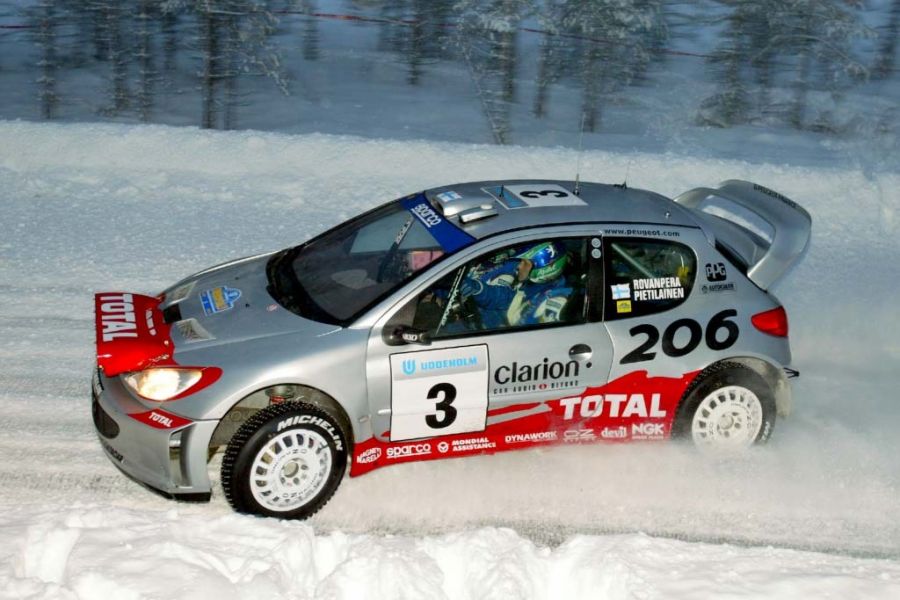
Harri Rovanpera scored his only WRC victory with Peugeot
Four drivers were winning with 206 WRC in 2001
In 2001, Marcus Gronholm and a former world champion Didier Auriol were full-time drivers in the #1 and #2 cars. Gilles Panizzi and Harri Rovanpera were sharing the #16 car. Gronholm recorded eight DNFs in fourteen events, but three wins (Finland, Australia, UK) and one podium (Portugal) placed him on the fourth spot in the final classification.
Auriol added a victory at Rallye Catalunya while the asphalt specialist Gilles Panizzi scored a victory at Rallye Sanremo. Rovanpera scored his only WRC victory at 2001 Swedish Rally. Peugeot took the second consecutive manufacturers’ title.
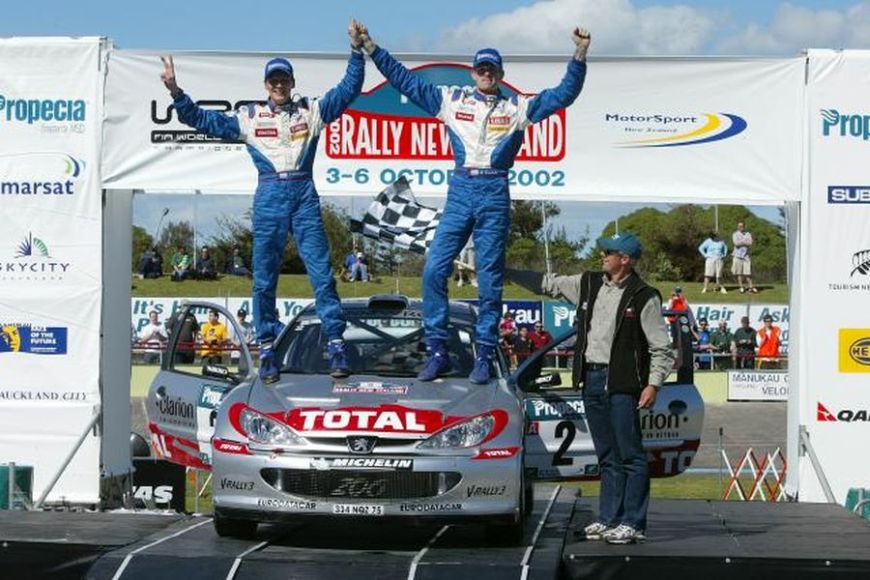
Marcus Gronholm secured his second title with a victory at 2002 Rally New Zealand
Gronholm’s absolute domination in 2002 WRC season
In 2002, the driver lineup was changed again. The reigning world champion Richard Burns moved from Subaru to Peugeot, taking the #1 car. Marcus Gronholm was in the #2 Peugeot while Gilles Panizzi and Harri Rovanpera were sharing the #3 car, but also competing in the #23 and #25 entries.
Marcus Gronholm was an absolutely dominant driver in the championship, collecting more than double points over second-placed Petter Solberg. Gronholm won five times (Sweden, Cyprus, Finland, New Zealand, Australia), finishing four more times on the podium.
Fantastic trio secured one more manufacturers’ title
Richard Burns didn’t reach the top podium spot. He finished five times in the second or third place. In the final classification, he was fifth. Gilles Panizzi won three times (France, Spain and Italy), finishing sixth in the points. All three drivers were eligible to collect points for the manufacturers’ standings and Peugeot dominantly took its third consecutive title.
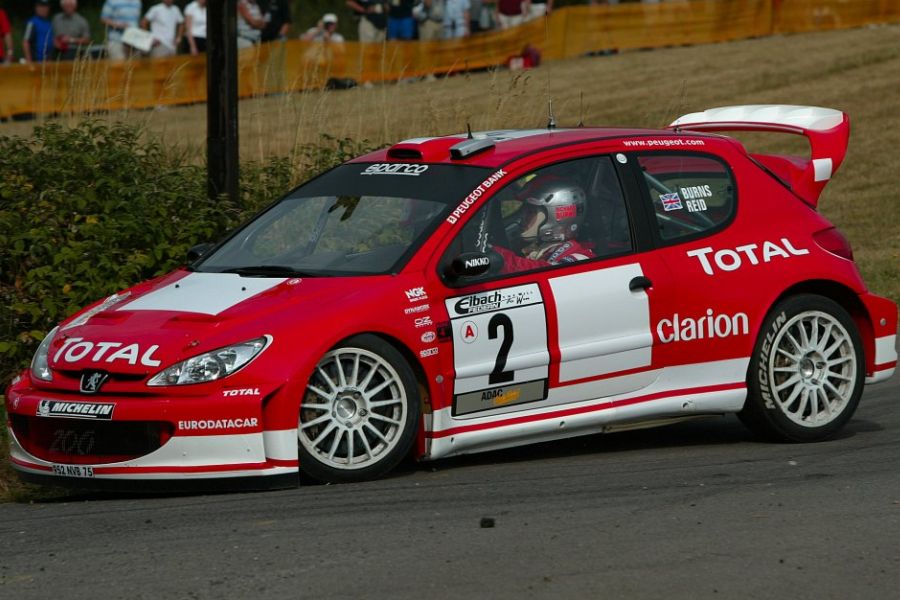
Peugeot 206 WRC was the last car for Richard Burns
Illness forced Burns to pull out from the title fight
The same trio competed in the 2003 WRC season. Gronholm and Burns switched numbers on the cars while Panizzi was sharing the #3 car with Rovanpera. In the last championship round, at Wales Rally GB, Freddy Loix stepped into #2 car as a replacement for Burns, who missed the event due to illness, which turned out to be cancer.
Panizzi scored the last win for 206 at 2003 Rally Catalunya
Burns was the best among Peugeot drivers in the points standings, although he missed victories again. With seven podiums, he finished fourth in the points. Gronholm was victorious three times (Sweden, New Zealand and Argentina), finishing sixth in the points. Gilles Panizzi won the Rally Catalunya in October and it was the last world championship victory for Peugeot 206 WRC.
307 WRC came as a replacement in 2004
After losing a battle against Citroen Xsara WRC and finishing second in the manufacturers’ points, Peugeot introduced a new car in 2004. It was the 307 WRC, based on the production coupe cabriolet model 307CC. In total, Peugeot 206 WRC was a victorious car twenty-four times, mostly (15 times) in the hands of the two-time world champion Marcus Gronholm. Gilles Panizzi added seven wins, Didier Auriol and Harri Rovanpera triumphed one time each.
Peugeot 206 WRC technical specifications
Length: 4005 mm
Width: 1770 mm
Heigth: 1300 mm
Wheelbase: 2468 mm
Track (front and rear): 1534 mm
Weight: 1230 kg
Chassis: Monocoque, steel construction
Engine: 1997cc, 4 cylinder turbo charged
Power/torque: 300 hp/635 Nm
Transmission: full time 4WDfront, center and rear electronically controlled differentials
Gearbox: 5-speed sequential, longitudinally mounted
Suspension: Independent McPherson struts lower wishbone, coil springs and gas shock absorbers, cabin adjustable anti-roll bar on gravel, electronically adjustable, “active” anti-roll effect on tarmac
Braking system: front 355mm vented disks fixed 6 pot water cooled aluminum calipers, rear 300mm vented disks fixed 4 pot aluminum calipers
Wheels/tires: 8″x18″ wheels, Michelin 20×65/18
Video story about Peugeot 206 WRC
Photos: ewrc.cz, allracingcars.com, motorsport.com,


